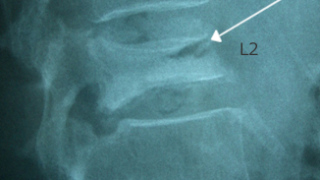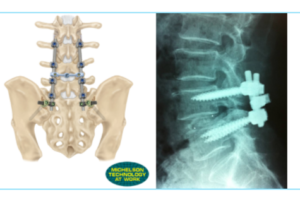Osteoporotic Vertebral Compression Fracture
2022年5月9日
最終更新日時 :
2023年10月27日
 webmaster
webmaster
I will provide information on surgical methods, length of hospital stay, and insurance coverage for osteoporotic vertebral compression fractures.
Osteoporotic Vertebral Compression Fracture
Osteoporotic Vertebral Compression Fracture
Osteoporosis refers to a condition where there is an imbalance between bone resorption and formation, leading to a decrease in bone mass and weakening of the bones. Osteoporosis not only results in a loss of bone density but also causes changes in bone quality, making the bones more brittle. This imbalance in bone health is influenced by female hormones, and it is more commonly observed in women after menopause. When osteoporosis weakens the spine, it can lead to fractures known as vertebral compression fractures.

Symptoms
As osteoporosis progresses, vertebral compression fractures can occur even without trauma such as falls. These fractures result in severe back or lower back pain. The collapsed vertebrae do not return to their original shape, and over time, the bones fuse in their collapsed state, which can relieve the pain. However, even after the pain subsides, conditions like a rounded back (kyphosis), hunchback, and a reduction in height may persist. Once a fracture occurs, it becomes more prone to recurring, emphasizing the importance of not only early treatment for fractures but also the prevention of osteoporosis.
Treatment methods
Bone density can be relatively easily measured, and if a decrease in bone mass is observed, medications that increase bone mass or strengthen bones are prescribed. Additionally, when vertebral compression fractures have already occurred, measures like using a corset or cast can be employed to alleviate pain and prevent spinal deformity. Without appropriate medical treatment at a hospital, the bones may not heal properly, and pain can persist.
Surgical methods
This fusion involves inflating the collapsed cavity within the vertebral body using a balloon and injecting bone cement into it (BKP). In some cases, due to instability or deformity caused by a fracture, there may be nerve impingement leading to paralysis in the lower limbs. In such instances, nerve decompression and fixation surgery may be necessary, so early consultation is recommended.


